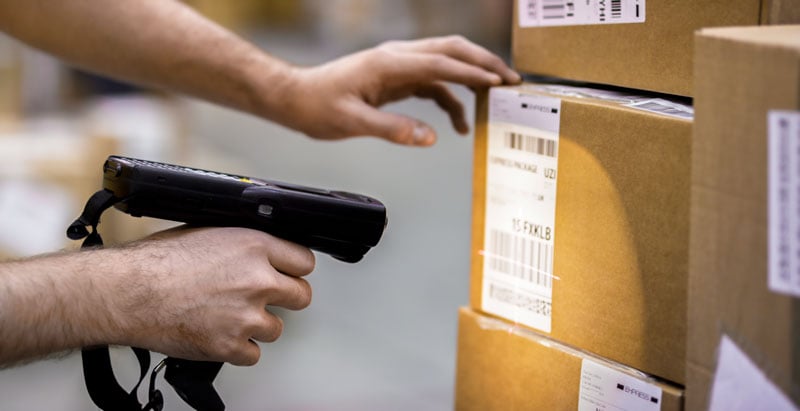Mobility Opens Up Warehouse-Improvement Opportunities
The inhabitants of ancient Rome wouldn’t have survived long without the 20-plus grain warehouses situated throughout the city. Around 150,000 tons of grain were required each year to feed the Roman people according to Ancient History Encyclopedia.
A key warehouse-improvement initiative for the times was the expansion of the Grandi Horrea warehouse complex in the coastal town of Ostia near Rome. Begun under Claudius nearly 2,000 years ago, it was enlarged almost immediately during Nero’s reign.
Fast-forward to today’s warehouses. They’re more complex than they were just a decade ago. According to VDC Research, the top three warehouse improvements on most everyone’s radar are to:
- Ship orders faster
- Improve perfect order rate
- Improve workforce optimization
But challenges abound. VDC’s Eric Klein says in the white paper Taking Advantage of Apps and App Modernization in Warehousing that products and channels have proliferated, late-stage customization requirements have increased, the number of temperature environments has grown (e.g., cold chain, frozen etc.), and warehouse employee turnover remains high.
The white paper is designed to answer the question, “What are the issues and barriers associated with implementing modern mobile devices and applications to support warehouse operations.”
Many View Their Mobility Deployments as Immature
VDC data showed that 53% of IT decision makers supporting warehouse operations viewed their mobility deployments as immature. The data also showed that 56% of organizations plan on upgrading their existing fleet of mobile devices because these devices are nearing their end of life and/or the old age of their existing devices.
Through its research, VDC uncovered a recurring theme—there’s often a disconnect between individuals looking to deploy modern mobile solutions and the supply chain executives who sign off on these technology investments.
The executives that VDC interviewed all were focused on cost reduction and they recognized that mobile technology was continuing to play a more significant role in helping to improve efficiency and accuracy in their supply distribution chains.
A Significant Opportunity to Modernize
Given that the majority of the legacy applications in use today in warehouse deployments are text-oriented and keyboard-centric solutions, the opportunity to modernize is significant. Below are VDC’s recommendations to assist in the decision-making of these mobile solutions to successfully modernize the mobile technologies used in your warehouse deployments:
- Perform an accounting of your mobile computing devices. Determine if your vendor’s solution will allow you to continue to utilize your hardware. Also, make sure you can continue to leverage your existing vendor relationships.
- Consider the processes involved with integration with your existing systems. What will be required for seamless integration with your warehouse management and control systems, or other solutions? What are the ramifications of changes to any of these systems? Make sure you can easily integrate systems now and in the future and are not limited by custom integration software.
- As with any significant technology investment, you should ask for references. Determine how the vendor supports customers and handles problems.
And speaking of references, 22 of the world’s Top 25 Supply Chains use Ivanti mobile productivity solutions.
One such success story is Couche-Tard, which operates more than 2,000 convenience stores in Canada, primarily under the Couche-Tard® and Mac’s® brands. The company also operates thousands of stores under the Circle K brand in the US, Europe, and other parts of the world.
Couche-Tard’s 650 stores in Quebec are served by a single distribution center located in Laval. It houses more than 3,000 SKUs of perishable and non-perishable products and provides three scheduled deliveries to each store every two weeks.
Saving Seconds Off Each Pick
This particular distribution center is always looking for innovative ways to shave even a few seconds off each pick. Introducing wearable technology was a significant step forward. It not only introduced efficiencies that allowed the company to reduce costs, it also freed pickers from carrying clipboards and label-guns around the warehouse as they worked.
- 22% uplift in picking speed: Couche-Tard replaced its clipboard-and-label-gun-based warehouse processes with a solution based on wearable mobile computers from Zebra.
- Annual savings of $36,000 on paper alone: Eliminating the use of labels saved $36,000 per year, and the company has reduced its impact on the environment as well.
- Voice picking that works: Ivanti Speakeasy (powered by Wavelink) simply sits on top of Couche-Tard’s existing platform and runs entirely on wearable devices. Speakeasy converts the text from the existing interface into speech, so pickers don’t need to look at their screen for the next instruction.

